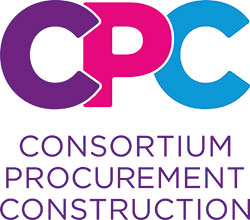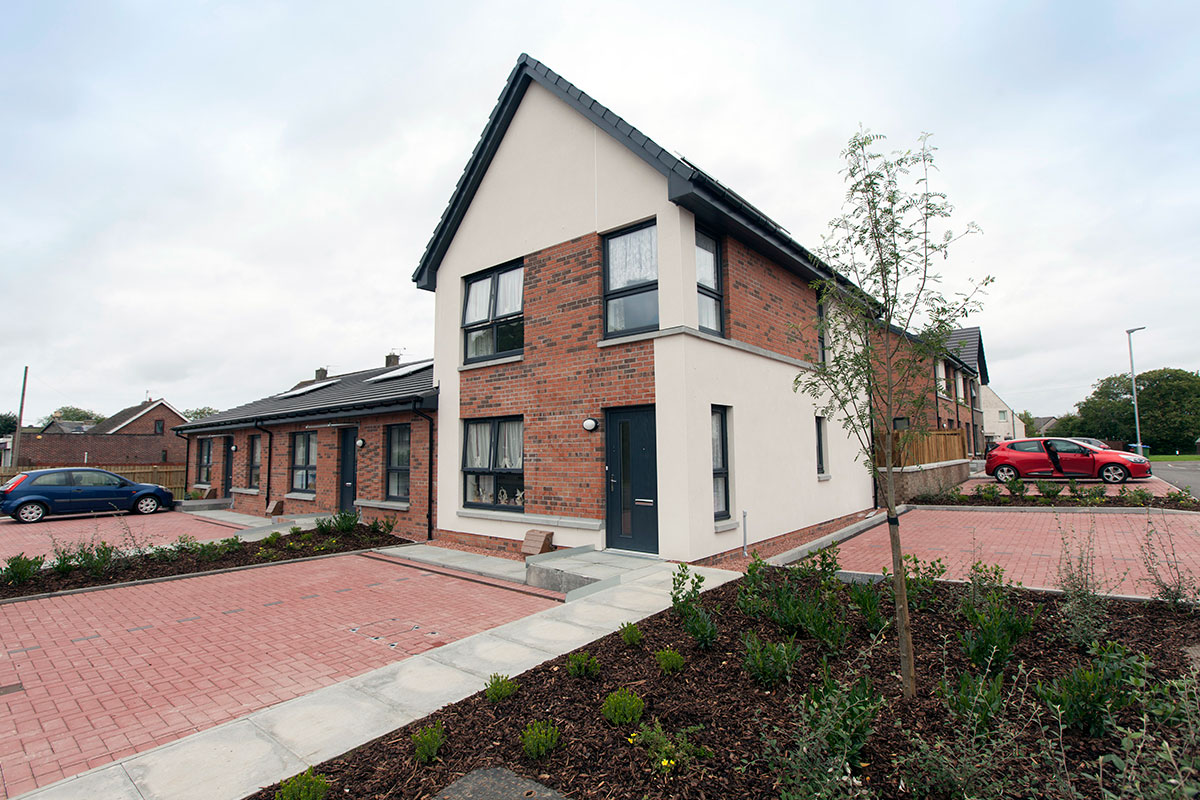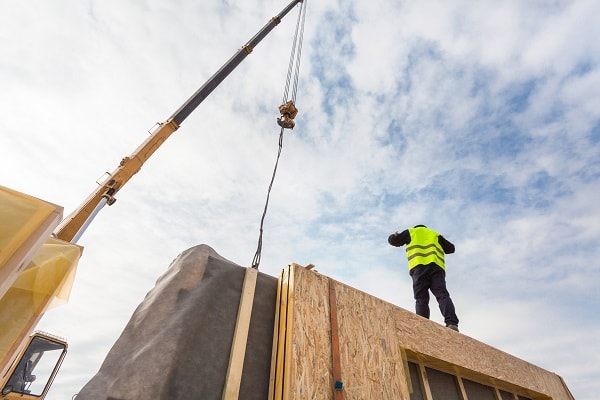What could the future of housing look like?
Clive Feeney, director at LHC, and Tracy Harrison, chief executive of the Northern Housing Consortium, talk to Inside Housing about what registered providers need to consider if they are looking at building homes with modern methods of construction
In association with:

Modern methods of construction (MMC) have been used since World War II.
However in recent years, government has placed increasing emphasis on this as a solution to increasing development at pace.
Councils and housing associations are hesitant about this suggestion and the government recognised this in the report Building for Change, which also introduces the role of ‘integrator’.
In response, the London Housing Consortium (LHC) and the Northern Housing Consortium (NHC) have come together to launch Consortium Procurement, a ‘one-stop shop’ to help.
What is your definition of modern methods of construction?
Clive Feeney: Modern methods of construction is a definition framework created by the government, containing seven categories of modern construction services. MMC gives social housing providers and their homebuilding partners a common language that will aid collaboration and further adoption of pre-manufacturing, site-based materials and process innovations.
Tracy Harrison: There are a confusing range of build methods covered by the term but we use it to describe the use of factory-produced, pre-engineered building units or components.
What are the advantages of MMC?
CF: The method can be as much as 30% quicker than traditional construction but it’s not just about speed of the build – there are many other advantages. Factory-built homes result in less waste, not just in the build process but once occupied, and there are reduced carbon emissions and improved health and safety. Not only that, but if homes are built quicker then rented out, revenue streams are accelerated.
TH: Alongside speed of delivery, another major advantage of using MMC is the quality standard of homes that are built in factories, which is particularly relevant in the wake of the tragedy at Grenfell. With MMC, you can achieve an extremely high degree of quality control and assurance, plus the benefit of having the location of all the services logged in detail, giving confidence that any repairs and maintenance work that’s needed in the future can be done with precise information of where everything is located in the home.
Why have social landlords been hesitant to find MMC partners?
CF: Many landlords aren’t knowledgeable about MMC so lack confidence in it. Modular builds have a poor reputation and many think that innovative design may be restricted and that this could lead to repetitive, bland housing schemes, and therefore upset the surrounding community. It’s also about having confidence in the materials used and perception of quality. I have experience of working in Scotland where the industry is different and this isn’t an issue – 85% of homes are made from timber components and contain elements of offsite manufacture.
We need to be brave though and it’s an opportunity for the public sector to lead the way by collaborating to build in volume and to reduce risk. We need to be organised and be talking right from the beginning of the process. If there are early discussions between suppliers, contractors and architects about materials and design, then an innovative product can be developed and delivered.
TH: Clive’s right that customer perception is often an issue that can lead social landlords to be reluctant, particularly because of negative associations with historic, post-war prefab builds – although it’s important to point out that many of the residents of these properties absolutely love them!
NHC has organised several tours for our members at factories such as Legal & General and Ilke Homes, as well as Home Group’s inspirational Innovation Village in Gateshead, and visitors on those tours have always been surprised and impressed by the high quality of the homes.
But the main barrier members have expressed to NHC is the cost versus traditional build. Tackling this was one of the key drivers behind our partnership with LHC. We know that some of our members are interested in MMC but are only looking at a site of five new homes, for example, and this would make it prohibitive for them in terms of cost. To drive value with the manufacturers, you really need to achieve a visible ongoing pipeline of demand.
Main image and above: The Cassillis Court project, in Dalrymple, East Ayrshire, an affordable housing development built using modern methods of construction
So, what we are doing is bringing members together to aggregate their volumes, and this will be when we will see the real cost benefit of MMC versus traditional build. We’ll also be able to offer a solution that works for those with significant new build plans and those who are developing on a more modest scale.
Another very real concern members have raised is around the erosion of the traditional construction skills base. However, MMC presents an exciting opportunity to develop new skills in areas such as digital design and development and, of course, there will always be a need for ongoing repairs and maintenance of properties, meaning several of the core trade skills will still be required.
Making MMC work
How can we be sure that…
…the product will have a 60-year design life?
- Consider using components that are standard across the construction industry, such as timber frame or light-gauge steel frame
- Consider using traditional external cladding and roofing systems
- Ensure that the finished build has third-party build warranty, such as from the National House Building Council
- For non-traditional elements look at third-party certification from the British Board of Agrément (BBA) or the Buildoffsite Property Assurance Scheme (BOPAS), for example
…residents are happy with the appearance and quality?
- Include residents in the design and layout process
- Invite residents to the factory to see their homes being built
- Communicate other benefits, such as improved energy performance and reduced bills
…the manufacturer is financially stable enough to meet our demands?
- Ask for a performance bond from the main contractor and warranties from others in the chain
- Consider vesting certificates for products that have been manufactured but not yet delivered
- Procure manufacturers on a partnering basis and ask for transparency on financial robustness
- Collaborate with other registered providers with similar needs
…we are getting value for money to remain competitive?
- Look at the long-term cost trajectories of existing traditional build against offsite techniques
- Evaluate the costs of the whole project from inception to end of life
- Consider potential cash-flow trade-off between earlier payments for the manufactured product and earlier receipts from quicker build times
How can their confidence in MMC be boosted?
CF: Again, if smaller housing associations group together with local authorities and other social landlords to pool demand it can create a large-volume project. This will give visibility of the pipeline to manufacturers who will be able to share this information with their supply chain and drive efficiencies throughout the whole process for the collective benefit of all stakeholders.
TH: Seeing is believing! A big part of boosting confidence is factory and site tours. We are also organising events and round tables to give members a chance to share best practice and start to embrace the use of MMC. We’ve been working with industry professionals who have led on large MMC projects in the North, such as Paul Beardmore [formerly director of housing at Manchester City Council], who has written a discussion paper for NHC to help to share the learning that’s been gained.
LHC has established a network of suppliers to work with social landlords such as Sidey, a doors and windows provider
What are the issues specific to Northern England?
TH: We need more of the right homes in the right places. We’ve got a big opportunity because of the supply of brownfield land available in the North, and we’re fortunate that we have local authorities who are pro-development. However, the cost of bringing brownfield sites forward for development can be very high, often as a result of our industrial heritage and the associated land remediation costs, and our land values are often low, which presents a real conundrum.
Government policy directs support to areas of highest affordability pressure and in doing so leaves large parts of the country to deal with its own challenges. This national policy of geographically targeted support has an inadvertent impact in the North which is deemed to be ‘affordable’. This is why funds like the Affordable Homes Programme play such an important role in the North. NHC is backing the expansion of the Affordable Homes Programme to ensure it continues to support the North’s housing ambitions. We think this is critical when one in three affordable home completions supported by Homes England occur in the North, making a vital contribution to government’s overall housebuilding targets.
How can using a procurement company help MMC projects?
TH: We can help to de-risk the whole process. We have been jointly working on the procurement of an ‘offsite project integrator’ solution which will be live in early 2020. The integrator’s role and expertise is in understanding the entire process of designing a site for modular building, using experience of modular manufacturing to optimise the site and building layouts to deliver the most cost-effective solution.
The integrator will bring together the member’s brief, an architect familiar with modular and the manufacturing process, and a developer who will manage the site and install the manufactured units. We envisage that the integrator can be the main contractor, or can assign the single contract to its developer for a turnkey solution. The integrator framework will take away the uncertainty members may have by providing a complete end-to-end solution where the contracting party takes on any risk associated with the project.
CF: Using an integrated framework means pre-approved experts and professionals are engaged from the start. Initially, that might mean just making sure the right skills are in the right place at the right time but in the long term it can mean that platform-based approaches can be met. I believe the key to MMC working is collaboration and not simply to solve the issue of building at volume but also to bring in landowners, planning and financiers before the process starts.
It’s a mistake to bring people in once the process has started. Everyone needs to be on board from the start for early pre-project discussions and the advantage of doing this through procuring through a pre-tendered framework is that a client can conduct a soft market test to ensure the MMC solution broadly meets their expectations.















